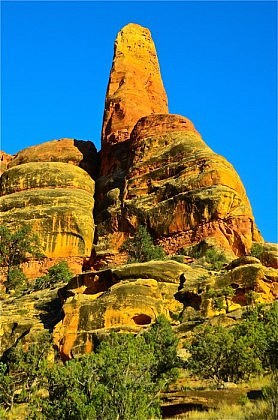Most of our Yellowstone backpacking treks are at altitudes of 6,000 to 9,000 feet, where the air is thin. Some of our Montana backpacking and Wyoming backpacking trips are at even higher elevations, beginning at trailheads of 8,000 to 9,000 feet with some hiking routes even topping out around or above the 11,000 foot level! Which means that because most of our clients live at or near sea level, we typically expect them to experience some shortness of breath for the first couple of days. Sometimes there are additional symptoms. There are ways for folks to minimize the effects of backpacking at high altitudes, but first, let’s look at a bit of background information.
The bad news is that it takes the human body a couple of months to fully acclimate to thin air. The good news is that you acclimate rapidly for the first 48 hours — about 50% of full acclimation — and then at a slower rate for the next few weeks. The body acclimates in a number of ways, but the big one is quite simple: your blood develops more red corpuscles for better efficiency at transporting oxygen. In other words, your blood thickens. And again, it does a lot of thickening during the first 48 hours at altitude.
People vary greatly in their ability to acclimate to high elevations; some develop physical problems while others do not. It is also interesting to note that individual responses to altitude are independent of one’s physical conditioning. Some folks are just genetically more susceptible than others to altitude-related problems. These problems/symptoms used to be called “Altitude Sickness” but nowadays the correct term is “Acute Mountain Sickness” or just AMS. The typical signs and symptoms of AMS include shortness of breath during exertion, dizziness and/or headache, nausea, loss of appetite and insomnia. In severe situations, AMS can progress to High altitude Cerebral Edema (HACE) or High Altitude Pulmonary Edema (HAPE), which mean fluid collects in the brain and lungs respectively. Both of these afflictions are life-threatening, and the only cure is to rapidly descend to lower elevations! In 38 years of guiding, we’ve never dealt with either one of these dire problems, as they are both quite rare and essentially unheard of below 8,000 feet (and usually occur at much higher elevations than that).
So for our guided backpacking treks in the western United States, we are primarily concerned with making sure that our clients are safe and relatively comfortable, especially during that critical first couple of days on the trail. The next installment will discuss some proven ways to ensure safety and comfort while backpacking in Yellowstone or anywhere else at altitude.



